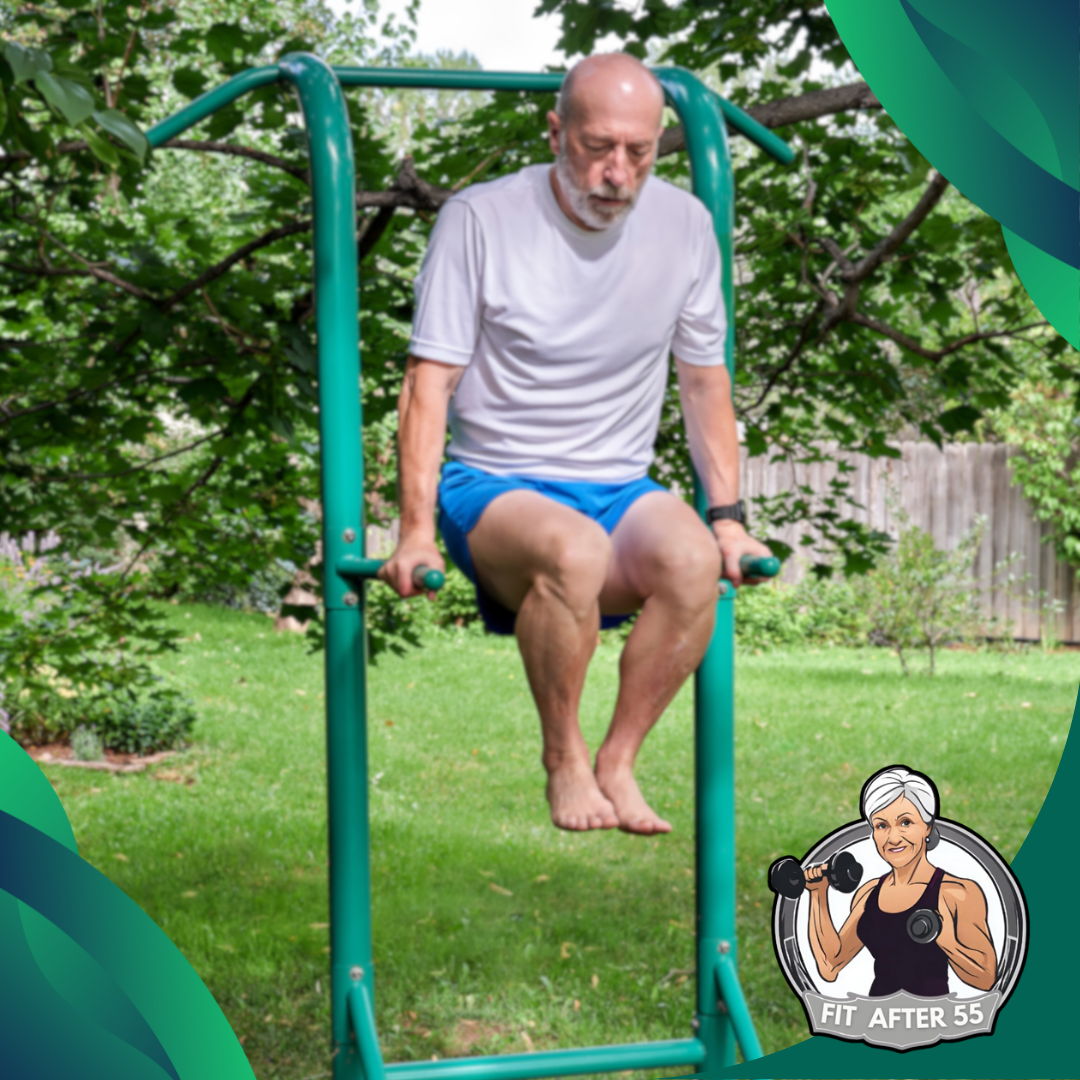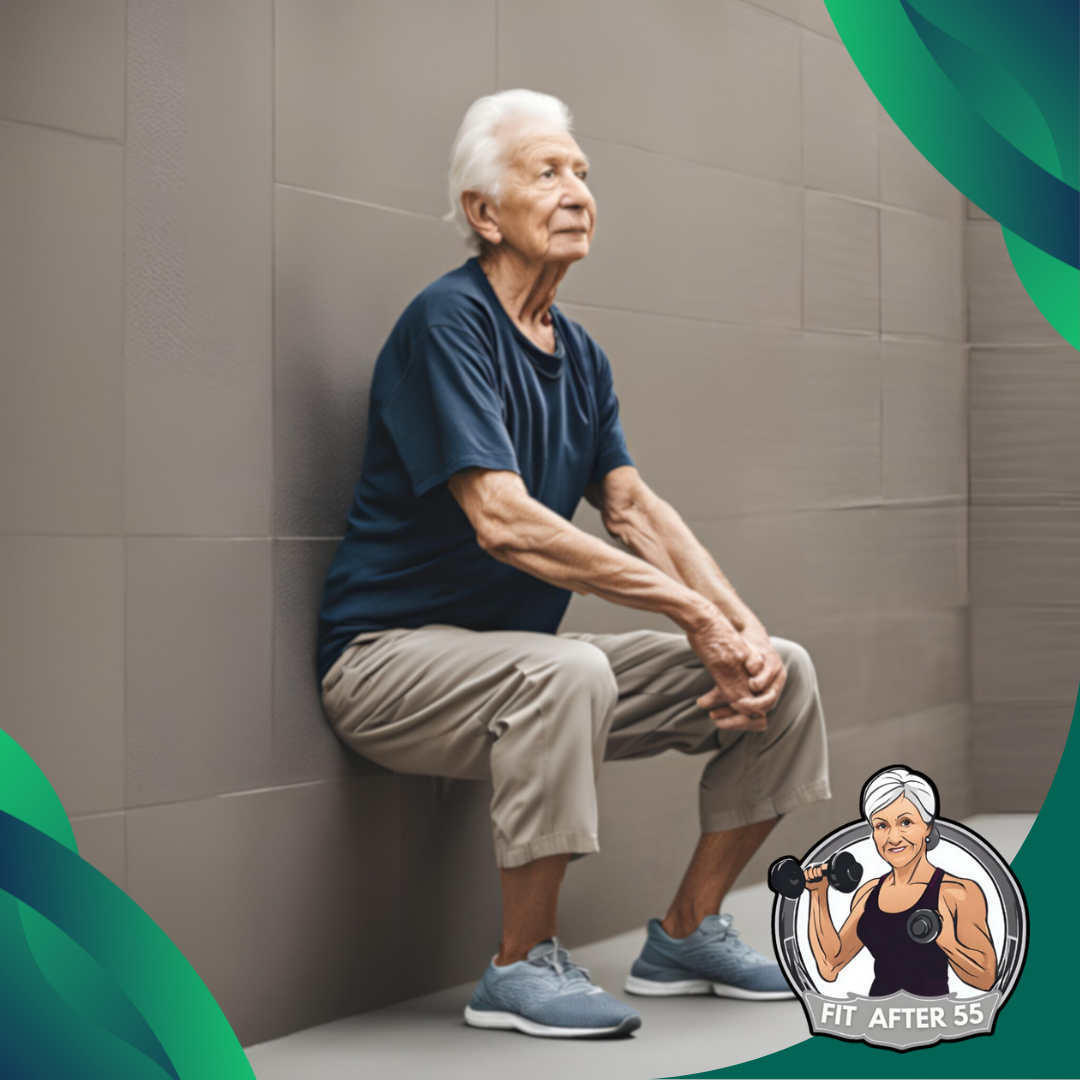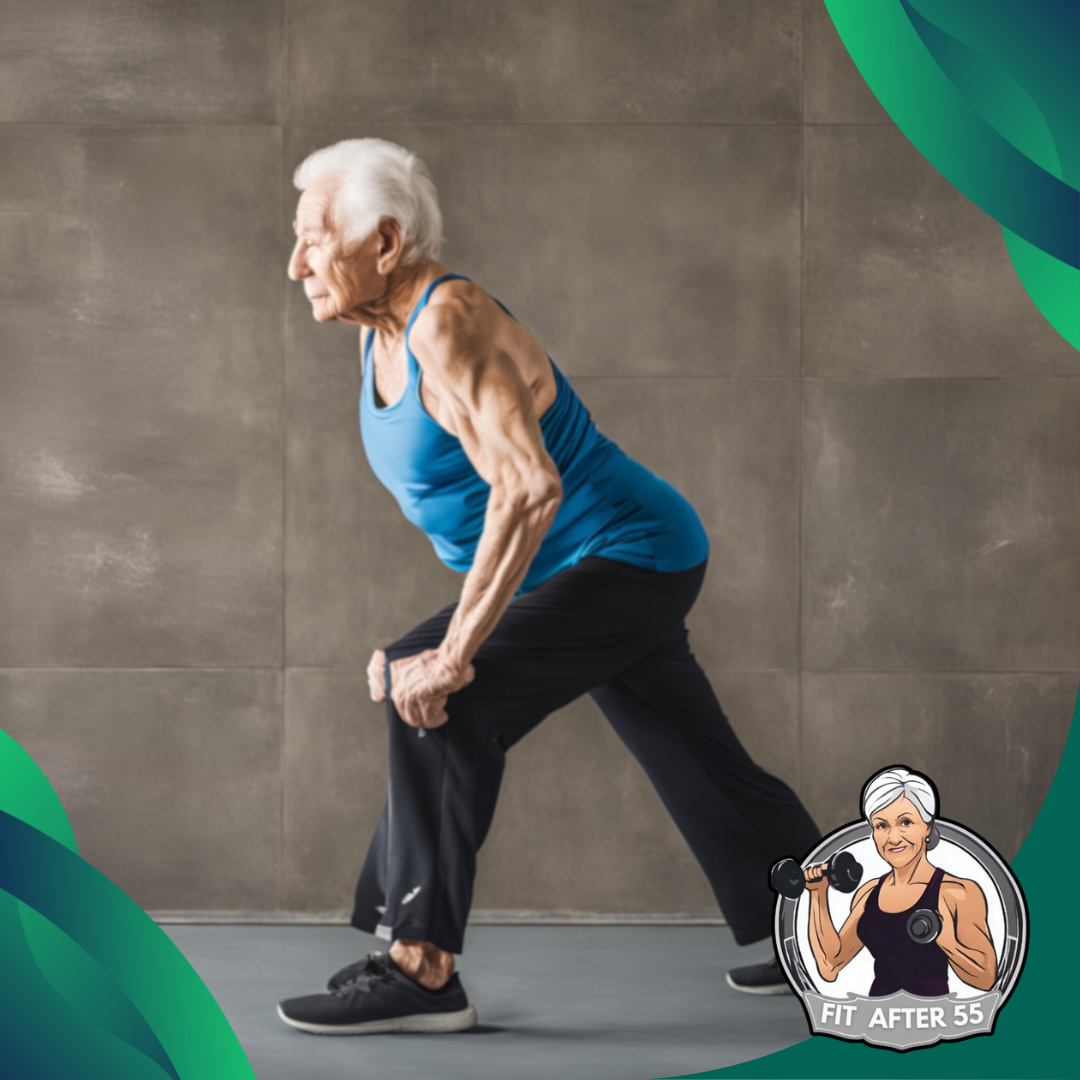Feeling a bit stiff and achy? Don’t worry, you’re not alone! As we age, staying active becomes even more crucial for maintaining our strength, mobility, and overall health. Isometric exercises offer a fantastic way to achieve this, allowing you to build muscle and improve balance without placing excessive strain on your joints. These gentle yet effective exercises make them perfect for seniors who want to stay fit and healthy. Let’s dive in and discover the benefits of these amazing exercises!
Benefits of Isometric Exercises for Older Adults: Strength Without Movement
As we get older, staying active becomes more important than ever. Isometric exercises offer a great way for older adults to keep fit and healthy. These simple yet effective movements can help build strength, improve balance, and boost overall well-being.

Isometric exercises can help lower and control your blood pressure, making them a valuable addition to your fitness routine. They involve holding a position without moving, which can be gentler on your joints compared to other types of exercise. This makes them perfect for older adults who may have concerns about injury or joint pain.
You don’t need fancy equipment or a gym membership to do isometric exercises. Many can be done right at home, making them convenient and accessible. Whether you’re sitting in a chair or standing in your kitchen, you can easily incorporate these exercises into your daily life.
Key Takeaways
- Isometric exercises can improve strength and balance with minimal joint stress
- You can do these exercises at home without special equipment
- Regular isometric training may help control blood pressure and boost overall health
Understanding Isometric Exercises

Isometric exercises are simple yet powerful. They can help you build strength and stability without moving your joints.
Defining Isometric Exercises
Isometric exercises involve tightening or contracting a muscle without moving the joint. You hold a position steady for a set time. Examples include:
- Wall sits
- Planks
- Dead hangs
These exercises don’t change your muscle length or move your joints. You can do them anywhere, often without equipment.
The Science of Muscle Contraction
When you do isometric exercises, your muscles work hard even though they don’t move. This type of contraction is called static. It’s different from the dynamic contractions you use in most exercises.
During an isometric hold, your muscle fibers create tension. This tension builds strength and improves muscle endurance. Your body also learns to stabilize joints better. Research shows that isometric exercises can even help lower blood pressure. They may be especially good for older adults or those with joint issues.
Key Advantages of Isometric Training

Isometric exercises offer unique benefits for older adults. These exercises can help you gain strength, improve muscle tone, and boost stability without putting too much stress on your joints.
Improves Muscular Strength
Isometric training can increase your muscle strength effectively. When you do isometric exercises, you hold a position without moving. This type of exercise can make your muscles stronger even if you don’t lift weights.
You can do isometric exercises anywhere, anytime. For example, try pushing against a wall or holding a plank position. These simple moves can build strength in your arms, legs, and core.
As you age, keeping your muscles strong is very important. Strong muscles help you do daily tasks more easily. They also lower your risk of falls and injuries.

Boosts Muscle Tone
Isometric exercises can help improve your muscle tone. When you do these exercises, you tighten specific muscle groups. This can lead to firmer, more defined muscles over time.
Try exercises like wall sits or dead hangs. These moves target large muscle groups in your legs and upper body. Doing them regularly can help you look and feel more toned. Better muscle tone isn’t just about looks. It can also help you move more easily and feel more confident in your body.
Enhances Stability and Balance
Isometric training can greatly improve your stability and balance. These skills become more important as you get older to prevent falls and stay independent.
Many isometric exercises require you to hold steady positions. This helps train your body to stay balanced. For instance, try standing on one leg while holding onto a chair for support.
Isometric exercises also strengthen your core muscles. A strong core is key for good balance. Try planks or wall pushes to work on your core strength. Better balance can make you feel more steady on your feet. This can help you stay active and reduce your risk of accidents.
Safe Exercise for Older Adults
Isometric exercises offer a gentle yet effective way for older adults to stay active. These exercises can help you maintain strength and flexibility with less strain on your body.

Low-Impact Nature
Isometric exercises are easy on your joints. You don’t need to move around much, which is great if you have mobility issues. Isometric exercises can be an effective way to help you stay fit as you age.
These exercises involve holding a position without moving. For example, you might push against a wall or hold your arms out to the side. This type of exercise is good for your muscles and doesn’t put stress on your bones.
You can do many isometric exercises while sitting or lying down. This makes them perfect if you have balance problems or can’t stand for long periods.
Reduced Risk of Injury
Isometric exercises are safer than many other types of exercise. You’re less likely to hurt yourself because there’s no quick movement or heavy weights involved. These exercises can help you build and maintain muscle with little movement. This is important as you get older to keep your strength up and prevent falls.
You can easily adjust the intensity of isometric exercises. If something feels too hard, you can simply push or pull with less force. This lets you work out at a level that’s right for you. Always start slow and listen to your body. If you feel pain, stop and talk to your doctor before continuing.
Health Benefits Beyond Strength
Isometric exercises offer more than just muscle strength for older adults. They can improve your overall health in several important ways. Let’s explore some key benefits beyond building strength.
Promotes Joint Health
Isometric exercises can be great for your joints. They put less stress on your joints compared to other types of exercise. This makes them ideal if you have arthritis or joint pain. You can do these exercises without moving your joints through their full range of motion.
By holding a position, you strengthen the muscles around your joints. This extra support can help reduce pain and improve stability. Try wall sits or planks to work multiple joints at once. These exercises can help keep your knees, hips, and shoulders healthy.
Improves Bone Density
As you age, keeping your bones strong becomes crucial. Isometric exercises can help with this too. When you perform isometric holds, you create tension in your muscles. This tension pulls on your bones, which can stimulate bone growth.
Exercises like planks are especially good for building bone density. They work large muscle groups and put pressure on multiple bones at once. Regular practice can help slow bone loss and reduce your risk of osteoporosis. This is particularly important for women after menopause.
Boosts Circulation
Isometric exercises can give your circulation a boost. When you hold a position, your muscles need more blood flow. This increased demand can help improve your overall circulation. Better blood flow means more oxygen and nutrients get to your muscles and organs.
Improved circulation can help lower your blood pressure over time. This is a big plus for heart health. Try hand grips or wall presses to get your blood pumping. Even short holds can make a difference. Start with 10-30 seconds and work your way up as you get stronger.
Convenience and Accessibility

Isometric exercises are easy to do anywhere, anytime. You don’t need fancy equipment or a lot of space to get a great workout.
No Need for Special Equipment
You can do isometric exercises with just your body weight. No gym membership or expensive gear is required! Wall squats and planks are simple examples you can try at home.
For added resistance, use everyday items:
- A sturdy chair for tricep dips
- A doorway for shoulder presses
- A towel for pulling exercises
This makes isometrics perfect if you’re on a budget or don’t have room for bulky exercise machines. You can even do many exercises while sitting or lying down if mobility is a concern.
Versatile and Space-Efficient
Isometric exercises fit into any lifestyle. You can do it while:
- At home
- In a hotel room
- At the office
- Even while watching TV!
Their low-impact nature is gentle on your joints, making them great for older adults. No jumping or running means no noise to bother neighbors. You can easily adjust the intensity by changing how long you hold each position. This lets you tailor your workout to your fitness level. Start with short holds and work your way up as you get stronger.
Integrating Isometrics into Lifestyle
Isometric exercises can easily fit into your daily routine and work well with other types of exercise. You can do them almost anywhere, anytime, without special equipment.

Incorporating into Daily Routine
Start your day with a plank hold while brushing your teeth. This simple addition can strengthen your core muscles. When watching TV, try wall sits during commercial breaks. They’re great for your legs and glutes. While cooking, do counter pushups. Place your hands on the counter and lean in, holding the position for 10-15 seconds. Repeat a few times while waiting for water to boil or food to cook.
At work, squeeze a stress ball for hand strength. Do seated leg lifts under your desk. Hold each lift for 15-30 seconds. Before bed, try a bridge pose. Lie on your back, lift your hips, and hold for 10 seconds. This helps strengthen your core and improves sleep quality.
Complementing with Other Exercises
Pair isometrics with your regular workout routine. Before cardio, do a few wall sits to warm up your legs. After weightlifting, add some isometric holds to really challenge your muscles. Try adding isometric holds to your yoga practice. In poses like warrior or chair pose, hold for an extra 10-15 seconds to increase strength and stability.
For a full-body workout, mix in some dead hangs on a pull-up bar. These help improve grip strength and shoulder stability. Remember to start slow. Begin with 10-15 second holds and gradually work up to 30-60 seconds as you get stronger. Always listen to your body and stop if you feel pain.
Psychological and Cognitive Benefits

Isometric exercises offer more than just physical advantages for older adults. They can boost your mental well-being and sharpen your mind.
Relief from Stress and Anxiety
Isometric exercises can help you feel calmer and more relaxed. When you tense and release muscles, it can ease tension in your body and mind. This type of exercise may lower stress hormones in your blood.
Try holding a wall and sit for 30 seconds. Focus on your breathing as you maintain the position. You might notice your worries fading away as you concentrate on the exercise. Regular practice of isometric moves may improve your mood over time. It can give you a sense of accomplishment and control.
Enhanced Mental Focus and Clarity
Doing isometric exercises can make your brain work better. These exercises require you to concentrate, which can improve your attention span. During a plank hold, you need to focus on keeping your body straight. This mental effort can carry over to other tasks in your daily life.
Isometric exercises may also boost blood flow to your brain. This can help you think more clearly and remember things better. Try adding isometric moves to your routine. You might notice you feel sharper and more alert throughout the day.

Fun Facts
Did you know that isometric exercises can do wonders for your posture? By strengthening the muscles that support your spine, these exercises can help correct poor posture and alleviate back pain, making you stand taller and feel more comfortable.
But that’s not all—there’s another hidden benefit! Isometric exercises also play a role in increasing bone density. By engaging your muscles in static holds, you put gentle stress on your bones, which can help prevent bone loss and reduce the risk of osteoporosis. It’s a simple yet powerful way to keep both your posture and bones in top shape!
Unleashing Your Fitness Potential: The Benefits of Isometric Exercises for Seniors
Incorporating isometric exercises into your fitness routine offers significant benefits for older adults. These exercises help build strength, improve balance, and enhance posture—all without the need for special equipment. Additionally, isometrics can increase bone density, helping to prevent conditions like osteoporosis and reducing the risk of injury.

By adding just a few isometric holds to your weekly workouts, you’re taking an important step toward maintaining your independence and improving your overall well-being. So why wait? Start incorporating isometric exercises into your routine today and experience the positive changes for yourself. Your future self will thank you!
Ready to unlock the power of isometric exercises? Join our community and discover how to incorporate these effective workouts into your daily routine. Let’s stay active and healthy together!
Frequently Asked Questions

Isometric exercises offer many benefits for older adults. They can help build strength, improve balance, and reduce joint stress. Here are some common questions about isometric exercises for seniors.
What are the primary benefits of engaging in isometric exercises for seniors?
Isometric exercises can boost muscle strength without putting stress on joints. This makes them ideal for older adults with arthritis or other joint issues. They also help improve balance and stability, which can lower the risk of falls.
How can isometric training contribute to the health of older adults?
Isometric training can help maintain bone density, which is crucial for preventing osteoporosis. It also improves cardiovascular health by temporarily raising blood pressure during the exercise. These exercises can be done anywhere, making it easy to stay active even if you have limited mobility.
Can you list some simple isometric exercises that are suitable for beginners, especially older individuals?
Wall sits are great for strengthening your legs. Simply lean against a wall and slide down until your thighs are parallel to the ground. Planks are another effective isometric exercise. Start on your hands and knees, then extend your legs back and lift your hips to form a straight line.
Are there any specific seated isometric exercises that are beneficial for seniors?
Seated leg extensions are easy and effective. While sitting, straighten one leg and hold it out for 10-15 seconds. Repeat with the other leg. You can also do arm presses. Place your palms together in front of your chest and push them against each other for 10-15 seconds.
What makes isometric exercises effective compared to other types of exercise for aging adults?
Isometric exercises are low-impact and gentle on the joints. This reduces the risk of injury during workouts. They’re also simple to do and don’t require special equipment, making them convenient for busy older adults.
Are there any disadvantages or safety concerns for seniors when practicing isometric exercises?
While generally safe, isometric exercises can temporarily raise blood pressure. If you have high blood pressure, check with your doctor before starting.
Always warm up before exercising and stop if you feel pain. Start with short holds of 10-15 seconds and gradually increase as you get stronger. A balanced diet to support your isometric exercises. Include plenty of protein to help build and maintain muscle.
Good protein sources include lean meats, fish, eggs, and beans. If you’re vegetarian, try tofu or lentils. Don’t forget about carbs and healthy fats. They provide energy for your workouts. Whole grains, fruits, and vegetables are great choices. Consider a post-workout snack to help with recovery. A banana with peanut butter or Greek yogurt with berries can be good options.
If you’re unsure about your diet, talk to your doctor or a nutritionist. They can help you create a meal plan that fits your needs.

Stay Active, Feel Alive!
Looking for fitness inspiration? Our Facebook page is packed with tips, tricks, and workout routines tailored for those 55 and over. Join our vibrant community and discover how to stay active, healthy, and happy.
Let’s get fit together!

